|
Contributing editor Benoit Lecavalier recently conducted an extensive interview with Valérie Masson-Delmotte, one of the world's leading climate scientists and the lead coordinating author for Working Group One, the Physical Scientific Basis, in the next IPCC Assessment Report. To read Part I, on climate science, click here. BL: As of now, what is one of the most challenging climate issues to communicate to the public? VMD: There are many challenges in communication. Probably the most difficult thing to communicate is the notion of “commitment:" the fact that, with respect to accumulated greenhouse gas emissions in the atmosphere, there is "committed" warming. The climate response [to anthropogenic greenhouse gas emissions] will continue on the long term, same with the glacial response, ocean warming, and sea-level rise. I understand that many believe that we have a global thermostat with our emissions. We have switched on the thermostat, and they understand it triggers warming, and they believe that if we decrease our emissions then we are safe. That’s wrong. Even if we decrease our emissions, we will only slowly stabilize the climate over generations to come. BL: Do you believe this is also one of the more important issues to communicate? VMD: Yes, the climate system has thermal inertia and momentum. People need to clearly understand that the actions we are not taking now will have very long lasting consequences. It is simply not possible to go back to a pre-industrial climate, it really is not possible. We have learned this by looking at the past, by studying the response time of the system and of its different components. BL: How are climate scientists trying to improve their ability to communicate their research? VMD: There was an IPCC workshop in Oslo, Norway, on communicating climate science with bloggers, social scientists, linguists, and the media. It is all accessible on YouTube. It covers all sorts of aspects, such as using language accessible to the public. I think that we must communicate crucial things like a physical understanding of the system, this is our work as physicists of the climate system. It is simply not possible to go back to a pre-industrial climate, it really is not possible. We have learned this by looking at the past. BL: You’ve mentioned that the use of the terms “unprecedented” and “tipping point” are often used incorrectly in media reports about climate change. Does that reflect a lack of outreach by climate scientists to the media and public? VMD: I think it can be a lack of background by the journalist on climate change issues, and the search for sensational issues which is the way the media works with the flow of information. It also has to do with the way we communicate science findings. You know there are high profile journals that search for new stories. We have these huge bodies of standard, high quality publications that do not get media coverage but consist of the main body of how science is producing new findings. It is easier to get media attention when you are outliers: either you are an outlier because you had a major breakthrough, or because you are covering a side story. I think there is an issue there. BL: You mentioned making the language of climate science more accessible. How have you gone about achieving this? VMD: There are many ways of going about this. I wrote books for children and I believe it helped significantly. If you manage to be clear with teenagers, then you can be clear with high level policy makers. Despite the difference in age, experience, and education level, they never had courses on climate science. So if you manage to be understandable to young people, then you are understandable to policy makers and the broader public. BL: Let's get back to the science. Climate scientists often return to drill the same ice sheet, ice caps, and glaciers. What is the importance of drilling additional ice cores? How is this justified to the public, and to funding agencies? VMD: They don’t often go back to the exact same location. Some of the first ice cores were drilled in the 1960s. Since that time, updating the last 50 years all the way up to present is very important. That is the period where we have satellite measurements, and good knowledge of large scale atmospheric circulation. It is crucial to frame the old records with our present day context and understanding. Additionally, we have the oldest ice challenge everywhere, and then we have the challenge of extracting recent climatic variations where we have to drill in coastal places with high accumulation rates. Furthermore, as I already mentioned, there is the issue with the last interglacial ice and where to find it. There is just a lot we do not know, particularly in Antarctica where there is a lot to be done on the long term picture. Finally, it’s not a matter of ‘empty’ polar regions, it is also a matter of inhabited regions where populations are affected by glaciers, either as risks or for water resources. Providing climate information at these non polar regions is really important. In high mountain areas, we have no direct measurements and no historical records. Yet they act as water towers for precipitation. They are critical for testing the suitability of climate models, especially when looking at hydrological aspects, and even with regards to atmospheric reanalysis. I think there is a need to raise the quantity of mountain ice cores worldwide, especially for the community that is working on regional climate modelling, so that they can make use of the complex and unique climate information these cores contain. Also, ice cores provide very precious information on atmospheric aerosol composition (dust, volcanic ash, pollution) for which we usually have very limited records prior to the 1980s. This data is extremely precious for atmospheric chemistry, which drives regional climate change. It is easier to get media attention when you are outliers: either you are an outlier because you had a major breakthrough, or because you are covering a side story. I think there is an issue there. BL: Aerosols created by human pollution end up in ice cores across the world. Shouldn't that unequivocally demonstrate to the public that humans have a global climate impact? VMD: Certainly, it provides a background for understanding both how much we have and are affecting our environment, and also sometimes how policy measures can be efficient. If you look at the introduction of lead in fuel in the 1920s, for instance, you can see an atmospheric rise and then a decrease after regulations were put in place in the 1970s. The ice cores can monitor this change and demonstrate the positive effect of policy measures. There are two sides: having people aware [of the danger posed by anthropogenic climate change], but also showing past policy measure progress, which is important. BL: What are you currently working on? VMD: In the last year I’ve worked quite a lot on Greenland, especially the recent [climate] variations there. I've also looked at the fingerprint of the climatic cooling response to volcanic forcing. This is quite relevant and important because we will have large volcanic eruptions in the future, and we have to communicate to policy makers that this may happen. We do not know when an eruption will occur exactly and it has to be expressed to policy makers that adapting to climate change goes beyond adapting to a gradual warming. It is also about being prepared for these types of events. With 7 billion people today and 9 billion people in the future, we need to be ready because the more we depend on food security, the more we are vulnerable on these types of climate perturbations. That is one thing that has taken much of my attention recently. My colleagues and I have also worked on Antarctic climate over the past two thousand years, and I think we are now providing quantitative information that is not just noise. I also have a new research project on the present Arctic water cycle to monitor water isotopes like those in ice cores and tree rings. Thanks to laser instruments, we can monitor the water isotopes continuously. We have instruments running in different sites: Svalbard, and a new one in Greenland. I believe by better understanding how the water isotope signal is produced at the weather scale we can better understand the ice core records. Water isotopes is an "integrated tracer." Using them, we can test climate models, and the ability of climate models to simulate the origin and transport of moisture. This is important on the climate feedbacks and impacts, so I would like to bridge this gap in knowledge. Finally, I have a new position with the IPCC that is currently ramping up, and decreases my ability to do my own personal research. I’m currently in the transition phase of my new role as co-chair of Working Group 1, the main scientific report of the IPCC. My responsibility in this new role is to facilitate the work of the authors, and uphold the principles of the IPCC, which are: transparency, rigour, and comprehensiveness. It is very important for me to have an open mind, so that our work really is comprehensive. We require further understanding and confidence in our [climate] projections to lead to proper adaptation and mitigation. BL: Where do you see the next IPCC report going after the Fifth Assessment Report (2013)? VMD: There are many discussions on the future of the IPCC, which was decided for the upcoming Sixth Assessment Report [AR6]. It will be very similar in structure to AR5 with Working Group One, Two and Three, so the same basic organizations. I can say what I personally think but it all depends on decisions by the IPCC panel and scoping. One big issue is that we see that policy makers are interested in solutions. They acknowledge the climate problem now, and are interested in solutions which are framed through adaptation and mitigation. However, we have to be sharp and clear that we require further understanding and confidence in our [climate] projections to lead to proper adaptation and mitigation. Also, the AR4 and AR5 had very much the same structure, observations, processes, drivers, attributions, and projections, to keep things simple. That is not how people think or work. Usually people are interested in the processes, and then they look at timescales. So, I am in a consultation phase about what could be the structure of the next Working Group One [WG1] report, probably focusing on global to regional scale climate change. We are looking at further emphasizing the regional scale (since it is critical for policy makers); strengthening the discussion on natural variability (which overlaps with the human impact); and strengthening the process-based understanding. That is really all in the consultation phase. I would very much like to produce a new, original document that would be a report that cuts across WG 1 and 2, a report that implements the regional results from WG1 into WG2 to investigate the impacts of variability and adaptation at regional scales.
4 Comments
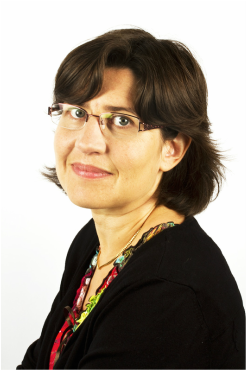 Valérie Masson-Delmotte is an internationally renowned climate scientist. She was a lead author for the "paleoclimate" section of the fourth assessment report published by the Intergovernmental Panel on Climate Change (IPCC). She was the lead coordinating author for the "information from paleoclimate archives" section in the IPCC's fifth and most recent assessment report. For the IPCC's upcoming sixth assessment report, she is a lead coordinating author for the entire Working Group One, the Physical Scientific Basis, which oversees all other scientific chapters. At the recent Second Open Science Conference of the International Partnerships in Ice Core Sciences, in Tasmania, our contributing editor, Benoit Lecavalier, conducted a lengthy interview with Dr. Masson-Delmotte. Later this month, we will publish Part II, on public outreach on the future of the IPCC. Benoit Lecavalier (BL): The historical climate record covers a period of direct measurements that inform us about past states of the climate system. How was our knowledge of the climate extended into the past? Valérie Masson-Delmotte (VMD): First, I would like to say that the instrumental period is in fact sometimes rather short. A few areas go back three centuries, like the meteorological records in England, while on the global scale the records extend back approximately 150 years at best. In some tropical regions, the precipitation records only go back 50 years. While measurements of Antarctic sea ice only begin with satellite measurements starting in ~1979. The instrumental records are very short, and so it is important to complement them with the use of either early instrumental measurements from the historical archives - for example historical information such as harvest dates, and dates for freezing over lakes and rivers found in Europe, Japan, or China. Finally, we have to use indirect information from natural archives, where in fact you have continuous recording of environmental parameters related to the mean climate state and variability. Starting basically at the beginning of the 20th century, people have developed methods to make use of all sorts of archives. First from continents, because they were easier to reach, came tree rings and lake sediments, then deep sea sediments, corals, and ice cores. BL: Can you elaborate on how tree rings bridge the gap between the instrumental and historical period with natural archives, and specifically how they represent a proxy for climate? VMD: In trees you can measure tree ring widths or density. What I do myself is the measuring of the relative abundance of heavy to light molecules, the atoms in some molecules. I also use the cellulose in the tree rings. In fact, the information on climate that you get depends on the tree's location. It is mostly related to what would be the strongest stress factor for tree growth. In cold areas at the tree line limit, it is temperature, mostly summer temperature, while in some places it can be the availability of moisture. The tree ring signal therefore depends on the location, and so when people are focusing on temperature then they will look for high elevation and latitude tree ring records where temperature is the key control. These tree ring records are then only selected to build a chronology. We stack the tree ring records and obtain tree samples from different ages with overlap periods with younger trees and older trees to correct for age effects related to the aging of the trees. Then the tree ring record must be calibrated, which is hard work. We must relate the parameters measured in the tree ring to a climate parameter and it implies a lot of statistical analysis to yield a robust methodology. Then a number of trees are agglomerated for a given region to produce a regional signal, to remove dependence on a single tree in the event that say, an insect attack compromised a tree. Ultimately it is about playing with a large number of records and then agglomerating them at the regional or even hemispheric scale. Depending on the place, tree ring records provide climatic information that can go back in time at the scale of one to two thousand years. BL: If we want to extend the record even farther back in time, we might look at ice cores. What types of measurements are conducted on ice cores and how do those proxies relate to environmental conditions? VMD: An ice core is basically a record of atmospheric deposition, so you have information on what remains of past snowfall after it has been eroded by winds. Furthermore, you have information on temperature through a number of direct and indirect parameters. The direct information arises when you drill an ice core - you are left with a hole in the ice and you can measure a temperature profile down this borehole. Any change in surface temperature will be imprinted but filtered by diffusion processes in this temperature profile. Therefore, borehole temperatures are probably the most direct information. When you have summer temperatures above zero degrees you have melt and refreezing and so melt layers form, a crucial piece of information on past temperature from ice core. Myself, I work on water stable isotopes, again measuring heavy to light water molecules directly in the water from the ice cores. And these are reflecting past changes in moisture transport from ocean and continental evaporation areas towards the central part of the ice sheets. Since the 1960s, we have greatly expanded our physical understanding of how hydrogen and oxygen isotope fractionation relates to past surface temperatures from theoretical models. We can also simulate it in atmospheric models. BL: We have temperature reconstructions from borehole temperatures, summer melt layers, and water isotopes from ice core studies, we also have additional information from the air trapped in the ice cores. What can be said of the ancient gases trapped in air bubbles, such as CO2? VMD: The instrumental records on atmospheric CO2 go back to the 1960s. We don’t have high quality CO2 records from Greenland ice cores, but we do have them for Antarctica. The issue is that Greenland is closer to the continents. It receives a lot of organic matter and dust from the nearby continents. There are chemical reactions taking place in the Greenland ice that make the preservation of the atmospheric composition of CO2 problematic. Instead, we rely on the analysis of the air trapped in the firn of Antarctic and in the ice cores. However, Greenland ice core remain very useful for methane and other gases, but not for CO2 unfortunately. BL: Ice cores yield a great deal of information on past climates. What are some novel inferences that have come out of ice cores in the past several years? VMD: What I like about ice cores is that we have local information, the amount of accumulation/precipitation, local temperature, then you have original information from the chemical analysis of the ice core, transport of sea salt, transport of dust from the continent, biomass burning from the continents, what we call aerosols, and then we can have more remote information. By looking at water isotopes, we have information on the evaporation conditions of water, not local but at the moisture source. We also have information on climate forcing through the deposition of volcanic aerosols, and through the impact of solar activity on cosmogenic aerosols. This allows us to reconstruct the external drivers of climate change. Finally, we have global information through the analysis of the atmosphere composition. This helps us place our current changes in a broader context, and it facilitates our understanding of how the global biogeochemical cycles work, from the past methane and CO2 cycle. The new information that arose from the long 800,000 year-old Antarctic ice core, which shed light on glacial-interglacial cycles, demonstrated relationships between atmospheric composition and climate, as well as between ice volume, sea level, and climate. We also have a lot of information on abrupt events of the last glacial periods which are characteristic of spontaneous climate variability, not related to the position of the Earth around the sun, which is the first-order driver of glacial-interglacial changes. These abrupt climate events arise from the internal reorganization of the climate system. We describe these events in more and more detail using data and models but we don’t know exactly the cause. More recently, a lot of information has arisen that compares the current interglacial with earlier and warmer ones. This helps us understand what happens when the climate is warmer than it is now. This research is not really about analogues but about case studies where you know what is the perturbation to the climate system. Based on this, you can test climate feedbacks under similar ranges of actions or "forcings" [climate influences]. Like what happened when climate in the atmosphere was two to four degrees celsius warmer than today, we have information of the past on that. We can use this data to test climate models, which is I think very important. Climate models developed for today based on process analyses and physics can be further validated by testing them on case studies for extreme cold and extreme warm conditions, to make sure that the models have the right feedbacks. At the moment, it appears we can start testing the models not only for the mean states but also for transient changes, like glacial-interglacial transitions. Finally, working on the last 2000 years is very important, it is a challenge for paleoclimatologists because we are looking for a small signal in a lot of noisy data. What is emerging is a detailed picture of regional changes around Antarctica and Greenland, changes in atmospheric and ocean circulation, the response to volcanic forcing, and modes of variability. All of these things will also be at play in the future in addition to being superimposed on the human influence to the system. I feel that scientists hate not to understand things, and there are things that we don’t understand BL: Ice cores shed light on ancient conditions going back hundreds of thousands of years, and climate scientists are looking for ever-older ice, termed the oldest ice on Earth. What is the relevance of this ice in particular to our overall understanding of the climate system? VMD: I feel that scientists hate not to understand things, and there are things that we don’t understand. Sea level was higher by 6-9 metres about 125,000 years ago, during the last interglacial period. We still do not know how much ice melted from Greenland and Antarctica and at what rate. This is a very relevant case study for the time response and the variability of ice sheets, and not knowing what happened to the Antarctic ice sheet is extremely frustrating, so that’s a strong motivation. It was the motivation for the quest to find the oldest ice in Greenland, the NEEM ice core project. It is still a motivation for that period in West Antarctica because right now the oldest ice in West Antarctica is 80,000 years old, from the new WAIS ice core. Moreover, the oldest ice core record from EPICA Dome C, in east Antarctica, demonstrates glacial-interglacial variations in cycles that last as long as 100,000 years, with intense transitions varying by roughly 5°C globally. From deep sea sediments we know that, a million years ago, there was a major climate reorganization with shorter ice age cycles of 40,000 years, with less intense glacial amplitudes, and we don’t know why. The motivation behind the search for older ice from Antarctica, all the way back to 1.5 million years ago, is to understand just why this major reorganization happened, and what happened to the atmospheric composition, particularly regarding greenhouse gases concentrations. BL: Where do you see ice core research going in the next couple decades? VMD: For ice core research I see things becoming faster, more efficient, and consuming less fuel for operation which is also part of the climate change issue. There is the development of fast drills which allow drilling in areas with difficult access, such as ice streams, fast flowing parts of glaciers, and ice sheets. This would provide important information on the deformation of the ice to better represent its flow. Regarding ice core analysis, we have seen the development of continuous analysis methods that yield data more quickly and provide highly resolved records. It is amazing to see students today that have more data over the course of their PhD than people could accumulate in sometimes 20 years in earlier periods. There is work on providing new high resolution results, new methods to measure isotopes and trace elements that were not possible before, better dating techniques especially for glaciers, and mountain glaciers. Also there are efforts towards large syntheses of data. It is not simply about going in the field and doing measurement, it is also about having a broader view. I often describe climate science as putting together a giant jigsaw puzzle, each element is like a piece of the jigsaw puzzle, one ice core, one new piece for the puzzle but we need to put all the pieces together and there are many missing. To put the story of past climate change together we must combine different observations and place them on the same timeline, that involves synchronizing the age scale (timeline) for ice cores, lake sediment cores, speleothems, deep sea cores and so on, to develop a clear picture of the ocean and atmosphere through time, the transient climate variation from the deep sea to the highest mountains and above. The goal is to have a 4D movie of climate evolution through space and time. I’m quite uncomfortable with the notion of a tipping point, but I think it is important to explain to people that in the climate system not everything is linear BL: We often hear that the rate of change in the climate system is currently unprecedented, however, paleoclimatologists speak of periods of abrupt climate change thousands of years ago. How do these periods in the present and distant past compare to one another? VMD: I think it is the media that always speaks about unprecedented changes, sometimes on very short timescales. One issue with climate change is what we call detection: do we detect something abnormal that may be attributed to a systemic perturbation, such as human greenhouse gas emissions, and of course we have been testing this for any and all parameters we can measure. Ice cores reveal that the atmospheric CO2 concentration is unprecedented over the past 800,000 years, but then it is also at a level that was encountered in the Pliocene three million years ago, so it is not unprecedented on geological timescales. It is the same for warming. The current warming, by level and rate of change, is unprecedented for the past 1500 years. It is the same for sea level. We have recent reconstructions of sea level that contribute to that. Still, if you go beyond that in the past, due to natural drivers there are periods that are warmer than today, maybe in the Early Holocene 12 to 8,000 years ago, while sea level was higher than today during the last interglaciation 125,000 years ago. So the issue goes beyond the level, it is also the rate of change and the cause of the process. And when we look at glacial-interglacial changes, we do not often have a resolution of less than 100 years in many records, especially ocean records. So it is still difficult to compare 100-year warming at present with an average of several hundred years in the past. In the last IPCC report, in the paleoclimate chapter, we relied on a single global temperature reconstruction from the glacial time to today, there is only one. It is just one study and we showed [that] deglaciations are the fastest climate changes that we know of globally. On that scale, we estimate the fastest warming is about 1°C per thousand years globally, but locally there are more intense changes. However, it is important to compare global to global or local to local. Abrupt events near Greenland were particularly large, 8-16°C in a couple of decades to centuries. Today’s changes in Greenland are not unprecedented, but if we go on with greenhouse gas emissions, in the high end business as usual scenarios, we would reach or go above the fastest changes of the last glacial period. BL: Do you think there might be a tipping point in the system, particularly for Greenland, which could lead to the reorganization of the system, heading towards the last interglacial conditions where we had sea levels 6-9 metres higher than at present? VMD: I’m quite uncomfortable with the notion of a tipping point, but I think it is important to explain to people that in the climate system not everything is linear. For example, melt of ice has a threshold of zero degrees celsius and that clearly is not linear. From what I understand now, for Arctic snow and sea ice, there is not really a tipping point. If it gets warmer you get less and less sea ice, and then if it stops warming or it gets colder it can recover quickly, so there is no real tipping point. If you look at the Greenland ice sheet there is clearly an amount of warming at which you can trigger a sustained long lasting deglaciation, that is a self-sustained process because when the ice sheet gets thinner then the surface is warmer because temperature decreases with elevation and then the Greenland deglaciation is self-sustained on the long run. The range of warming at which you can trigger this, I would not say a tipping point but a sensitivity threshold is something between 1 and 4 degrees celsius above pre-industrial values. So we are more or less at the lower end of this threshold. This interview has been lightly edited for readability. Stay tuned for Part II, later this month.
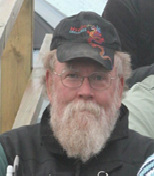 For the third episode of the Climate History Podcast, Dr. Dagomar Degroot interviews two leading archaeologists of the medieval and early modern Arctic: Dr. Thomas McGovern of the City University of New York, and Dr. George Hambrecht of the University of Maryland College Park. Since 1972, Professor McGovern has travelled the world for archaeological fieldwork. He has spent much of his time in the far north, especially in Greenland, Iceland, the Faeroes, and Shetland. He is one of the founders of the North Atlantic Biocultural Organization (NABO), and he is associate director of the Human Ecodynamics Research Center at the CUNY Graduate Center. He has an extraordinary record of groundbreaking publications on the history of Arctic peoples, and he has won many awards from the National Science Foundation, the Ford Foundation, the National Geographic Society, and other leading organizations. 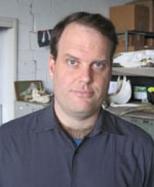 Professor Hambrecht is part of a new generation of interdisciplinary archaeologists of far north. He explores interactions between the political, environmental, and biological dimensions of the transformative early modern period. He is especially interested in historical and zooarchaeology in Iceland, the Subarctic, and the Arctic North Atlantic. He has done extensive fieldwork to reconstruct how Icelandic farmers coped with the onset of the Little Ice Age. He leads teams of interdisciplinary researchers in projects that have recently won support from the National Science Foundation. In this episode, professors Degroot, McGovern, and Hambrecht discuss the perils of doing fieldwork in the Far North; the struggles of the Norse in Greenland and Iceland at the onset of the Little Ice Age; the threat of climate change to the archaeological record of northern peoples; and the possibilities (and challenges) of interdisciplinary approaches to Arctic research. To listen to this episode, click here to subscribe to our podcast on iTunes. If you don't have iTunes, you can still listen by clicking here. Photo credit: Benoit S. Lecavalier (2014).  In the second episode of the Climate History Podcast, Dr. Dagomar Degroot interviews the co-founder and co-administrator of the Climate History Network: Dr. Sam White of Ohio State University. Professor White is one of the most innovative and respected environmental historians of the "Little Ice Age," a period of climatic cooling that, according to some definitions, affected most of the world from the fourteenth through the nineteenth centuries. Professor White's first book, The Climate of Rebellion in the Early Modern Ottoman Empire, was published by Cambridge University Press in 2011. In it, Professor White uses interdisciplinary methods and sources to explore how climatic cooling and drying shaped the history of the Ottoman Empire. The book won the Middle East Studies Association Albert Hourani award, the Turkish Studies Association Fuat Köprülü award, and the British-Kuwaiti Friendship Society prize for the best book in Middle East and Turkish studies. Professor White has also written award-winning articles, including one entitled "From Globalized Pigs to Capitalist Pigs: A Study in Animals Cultures and Evolutionary History," which was published in the journal Environmental History in 2011. It won the American Society for Environmental History Leopold-Hildy Prize and the Agricultural History Association Wayne D. Rasmussen Award. More recently, Professor White has received major fellowships to write a book that traces how climate change influenced the early settlement of North America. It is currently under contract with Harvard University Press.  In this episode, Professors Degroot and White discuss the origins and future of their Climate History Network; the prospects for climate history as a discipline; the possibilities and pitfalls of interdisciplinary research; the enduring value of the "Little Ice Age" concept, and much more. They also announce some good news for their network, which will let them expand its online presence and improve the sound quality of these podcasts. To listen to this episode, click here to subscribe to our podcast on iTunes. If you don't have iTunes, you can still listen by clicking here. Shortly after this was recorded, Dr. White and other climate historians hoped to attend a conference in Paris that would have honored Dr. Emmanuel Le Roy Ladurie, a founder of their field. The conference was cancelled in the wake of the atrocities on Friday. Our thoughts are with the victims and their families. 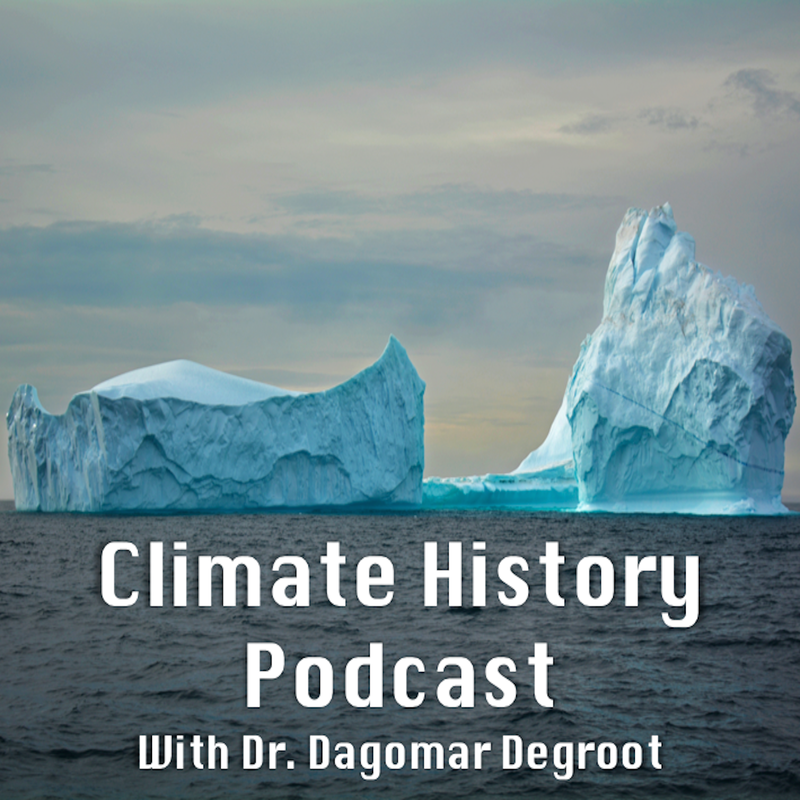 More and more people are recognizing that, to understand climate change today, we must study its past. The study of past climates has never been more popular or more interdisciplinary, and its findings are increasingly reaching the media. Policymakers are taking notice - although not always in ways we would like - and the general public is, too. In fact, this site now attracts around 100,000 visitors annually, and we hope to build on that number as we add new features and content. To that end, we are launching a new Climate History Podcast on iTunes. Within days, you will be able to search for it on iTunes, but you can already subscribe by clicking on this link. 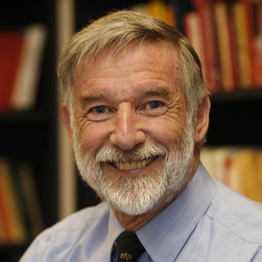 For our first episode, our founder, Dr. Dagomar Degroot of Georgetown University, interviewed one of the world's best-known and most respected historians: Dr. Geoffrey Parker, of Ohio State University. Professor Parker has authored, edited, or co-edited 37 books and more than 100 articles and book chapters. Recently, he released a groundbreaking new book called Global Crisis, which explores how a cooling climate disrupted societies across the seventeenth-century world. Global Crisis has won awards that include the prestigious Heineken Prize, given by the Royal Netherlands Academy of Arts and Sciences, and the British Academy Medal, given by the British Academy for the Humanities and Social Sciences. We were thrilled to have Professor Parker as the first guest on our podcast. To listen to our inaugural episode, click here to subscribe to our podcast on iTunes. If you don't have iTunes, you can still listen by clicking here. Photo credit: Iceberg off Greenland, by Benoit S. Lecavalier (2014). Climate change might be the most important issue the world faces today. Readers of this site will know it has a rich history. It helped trigger the evolution of sentience in primates, created conditions that encouraged agriculture, and influenced the rise and fall of civilizations from Bronze Age Greece to the Ottoman Empire. Its present, as we have recently been reminded, affects us all. In just the last week, dozens have died in Texan floods, hundreds in an Indian heat wave, and thousands in a Syrian war provoked, in part, by drought. The future looks even more alarming. The IPCC and WMO have both warned that the world, and our place in it, may be almost unrecognizable in a century. So why is there no climate change museum? Granted, most natural history museums have exhibits dedicated to climate history and global warming. The Smithsonian's National Museum of Natural History in Washington, D. C., for example, features a spectacular exhibit that links climate change to the fate of early hominids (above). The American Museum of Natural History in New York has an alcove just beneath the Hayden Planetarium that describes global warming and explains how scholars reconstruct past climates. But no permanent museum gathers all of this information in one place, in a way that skips over disciplinary boundaries and alerts the public about the importance of action, today. Miranda Massie and a group of like-minded experts are trying to change all that. Massie is the executive director of the Climate Museum Launch Project. Her initiative seeks to open a climate change museum in New York City, which she hopes will attract some one million visitors per year. We are delighted that she took the time to answer our questions.  Dagomar Degroot (DD): In a nutshell, what is the Climate Museum? Miranda Massie (MM): A climate solutions-focused museum with compelling, interactive exhibits in tourist-accessible New York City. There are two basic reasons for creating such an institution, both arising out of the enormous importance of climate change. First, in intellectual and cultural terms, it’s hard to think of a richer or more interesting subject for a museum. Climate change cuts across a huge range of disciplines and subject areas: many branches of science, of course, and also history, public health, conservation, social justice, psychology, art, and ethics, to name some of the most obvious. Second, and this is what inspires our team to take on a project of this magnitude, we believe that such an institution is uniquely fit to broaden climate engagement, and that an engaged public can generate the climate initiatives needed for humanity to flourish. The museum will break down cognitive and emotional barriers that have helped prevent the formation of a broad climate public. It will concretize climate science through immersive, sensory exhibits; serve as a hub for climate art and dialogue; inspire confidence by showcasing successes; and create a sense of connection and community. The Climate Museum will incubate shared optimism, determination, and enterprise on our most critical challenge. "An engaged public can generate the climate initiatives needed for humanity to flourish." DD: You were a PhD student in history at Yale. You became a lawyer who fought for the marginalized and dispossessed. How has your background equipped you to present the science of climate change in a new way? MM: I don’t think it has! We have a running list of exhibit ideas, but overall my thoughts on our programmatic content are quite general: it has to be solutions-focused, varied, highly engaging, and community-building. That’s hardly a blueprint. Instead, fresh and immersive presentations of the science will be the province of a team of scientific advisors, climate communications experts, exhibit designers, and curators, talent pools we’re exploring. One of the most rewarding aspects of this project is meeting so many gifted specialists—almost all of whom have responded with generosity and enthusiasm. On the other hand, I do think my background has prepared me for this work in other ways. Studying social history and prosecuting civil rights claims taught me that community participation can solve seemingly intractable problems. The latter also exposed me first-hand to the courage and resolve of unsuspected heroes. Both showed me we can win. DD: A recent New Yorker article claims that Hurricane Sandy convinced you that climate change was more than a middle class issue. Do you think the hurricane has helped – or will help you – find support for the museum in New York? Does that say anything about how the public understands climate change? MM: Over time, I came to see climate change as at once the ultimate social equality issue and a categorically distinct and overriding threat to human well-being. Sandy transformed my unease over not working on it into sharpening distress. As for Sandy and support, yes—I think Sandy is one of the key reasons the museum will happen. It changed how New Yorkers think and feel about climate change. It’s a priority for us now in a different way. There are other factors too, of course, including the leadership of the Bloomberg and now De Blasio administrations on climate, the effective work of many advocacy organizations and individual activists, and the joyful success of the climate march last fall. But Sandy was key. And that does say something about how we understand climate change. It’s easier for us to relate to discrete weather events than it is to long-term trends, risks, statistics, and the like. Climate science didn’t change the day after Sandy, but many New Yorkers’ feelings about it did. This is partly an American dynamic. Even leaving aside climate denialism, science and science education have been put under strain in the US, intensifying the intimidating and opaque quality of climate science (as compared to weather experience). But it’s also a human dynamic. We’re first physical creatures, then social and emotional ones, and then only on a good day, at least speaking for myself, intellectual ones. It’s one of the reasons a museum can be such an effective means of connecting with people on climate. It will contain the right information pyramid. This is very much a museum about resilience, adaptation, and mitigation—about our shared ability to escape the danger our shared abilities and proclivities have created. DD: Will your museum explore how humans have evolved with climate change, from prehistory to the present? Or will this be a museum of global warming? MM: The main focus will be on solutions to anthropogenic climate change, with concentric circles of context. One of those circles will be devoted to the history of the planet’s climate and its relationship to life, including human life. DD: To what extent will disaster and decline – keywords in the quest for action on global warming - play a role in your museum? MM: While we must be honest about growing risks, this is very much a museum about resilience, adaptation, and mitigation—about our shared ability to escape the danger our shared abilities and proclivities have created. DD: How close is the Museum of Climate Change to becoming a reality? What still needs to be done? How can people help? MM: Much closer than it was when we started fifteen months ago, with longer left to go. We’ve gotten as far as we have because so many people have offered support and expertise, and we very much welcome more. It is a huge help for people to spread the word through social media and in person. And we gratefully welcome your readers’ further thoughts on how we can, with their engagement and support, get closer to the red ribbon moment. I can be reached at [email protected]. This autumn, we are launching a climate change podcast series. Our podcasts will be shared and transcribed in this space. Stay tuned for details.
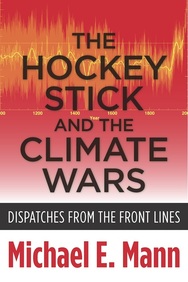 Dagomar Degroot (DD): In your most recent book, The Hockey Stick and the Climate Wars, you chronicle the campaign of misinformation surrounding a widely cited climate reconstruction you published in 1999. Why does the past matter so much for our understanding of present and future climate change? Were you surprised when your reconstruction thrust you into a debate about contemporary policy? Michael Mann (MM): In reality, the “Hockey Stick” (or indeed, the “Hockey Steam” of dozens of reconstructions published over the decade and a half since our original work by other scientists arriving at the same conclusions) has never been the central pillar of evidence for human-caused climate change that the critics make it out to be. There are dozens of independent lines of evidence that human beings are warming the planet and changing the climate through fossil fuel burning and other activities. However, the Hockey Stick demonstrates in a very visual, easily understood way how unprecedented the human-caused warming of the planet is. That made it a threat to vested interests opposed to taking action to curb carbon emissions. And thus did I find myself in the center of the larger campaign to discredit climate change, as I describe in the book. I was surprised at the time that the attacks were so nasty, ad hominem, and factually challenged. Perhaps I should not have been however. I have grown to realize that there is virtually nothing polluting interests won’t stoop to in their efforts to fool the public and policymaker about the threat posed by climate change. DD: In your opinion, is climate change scholarship necessarily political in today’s world? Do climate scholars have a duty to influence policy? MM: Unfortunately, it has become political, because vested interests have sought to divide the public on the issue, recognizing that a divided public is all you need to insure inaction. It wasn’t too long ago that there were politicians on “both sides of the aisle” who recognized the need to act on the climate change threat. In my book, I describe how former Republican House Science Committee Chair Sherwood Boehlert (R-NY) defended climate science and scientists when they were under attack by some of his fellow republicans. In this environment, it is essential that scientists and science communicators fight back against the politically-motivated attacks on their science. I expand on this theme in my op-ed in the New York Times earlier this year, entitled “If you see something, say something." I argue that if scientists do not attempt to inform the public discourse over this vital issue, then we all lose out because this creates a void which will readily be filled by those with an agenda of denial and inaction. 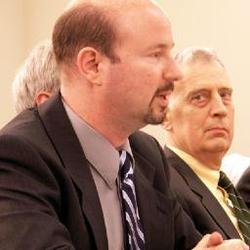 Dr. Michael Mann is one of the world's best-known climate change scholars. He is the director of the Earth System Science Centre at Pennsylvania State University, where he pioneers innovative methods for reconstructing past climate change. He is perhaps best known for a thousand-year climate reconstruction he co-authored in 1999, which featured prominently in both the IPCC's Third Assessment Report (2001) and in Al Gore's An Inconvenient Truth. Mann is the author of more than 160 peer-reviewed publications and two books, and he is the founder of the popular climatology blog RealClimate. On Twitter, he is followed by nearly 23,000 people. For these reasons, we asked Dr. Mann to give an interview that would launch a new "Interviews" section of HistoricalClimatology.com. We are very grateful that he took the time to answer our questions. "We must strive to communicate effectively but honestly, even in the face of an opposition that is unfettered by this latter constraint." DD: Recently, Neil deGrasse Tyson has called for more climate scholars to popularize climate issues as he has popularized astronomy. You are perhaps the world’s most famous climate scientist. How would you respond to Tyson? How can climate scholars connect with a sceptical public? MM: Well, I doubt I’m the world’s most famous scientist, but I appreciate the thought! I naturally agree with deGrasse Tyson (and I’m very much an admirer of his efforts to communicate science to the public), and indeed this was a primary focus of my recent New York Times op-ed. The late Stephen Schneider spoke eloquently of the double ethical bind that we face: we must strive to communicate effectively but honestly, even in the face of an opposition that is unfettered by this latter constraint. We must convey what is known in plainspoken jargon-free language, while acknowledging the real uncertainties that exist. Further, we must explain the implications of those uncertainties, which in many cases imply the possibility of greater, not lesser, risk. Finally, we must not be averse to discussing the policy implications of the science, lest we fail to provide our audience with critical information that can help them make informed choices about their own actions as citizens. DD: Scholars in more and more disciplines are now considering issues related to climate change. As a scientist, what kind of scholarship in “non-scientific” disciplines do you find most interesting? MM: Well, I’m very much a believer in the importance of interdisciplinary research, and climate change is an example of an area of science where interdisciplinary approaches are critical. Obviously, there is physics, chemistry, and math involved--and also biology, since life plays an active role in the climate system (e.g. the carbon cycle). But because climate change impacts so many aspects of life, i.e. human health, water resources, food, land, national security and conflict, and our economy, it is also critical that we interact with scientists in the social sciences, i.e. economics, sociology, political science, and psychology. Beyond this, however, are the ethical dimensions of the problem, i.e. how to balance the interests of the developed world and the developing world, how to balance the costs today with the costs that will be born by future generations. So disciplines of the humanities such as ethics, are critical. And of course, in communicating the science and its implications to the public, we must work with experts in communication and the arts. In my own efforts, both research and outreach, I find myself interacting with individuals in literally every one of the fields and disciplines mentioned above. "There has been a temporary slowdown in warming . . . . The slowdown is almost certainly fleeting." DD: Is there a “pause” in global warming? What does the controversy about a pause reveal both about climate science and its “sceptics?”
MM: There has been a temporary slowdown in warming, what I refer to as a “faux pause” in my Scientific American article earlier this year. The slowdown is almost certainly fleeting, due to a number of natural factors (La Niña, downturn in solar output, and an increase in volcanic activity) that have temporarily masked some of the warming that otherwise would have taken place. This is likely coming to an end. 2014 is on track to be the warmest year on record. However, with climate change deniers, this has never been about the science. They’ll typically grab onto any misleading talking point or myth that they think they can invoke to manufacture doubt about human-caused climate change. So we can expect that when 2014 sets a new global temperature record, they’ll move on to other misleading talking points. DD: Finally: what are you currently working on? MM: Lots of different things. I am working on a number of different projects that deal with climate change impacts on human health, and water resources, efforts to isolate the true impacts of natural climate variability in recent decades, and work aimed at understanding the factors behind the natural climate changes of past centuries. And of course, there is teaching, advising, and public outreach and communication. Suffice it to say, I manage to keep busy! |
Archives
December 2021
Categories
All
|

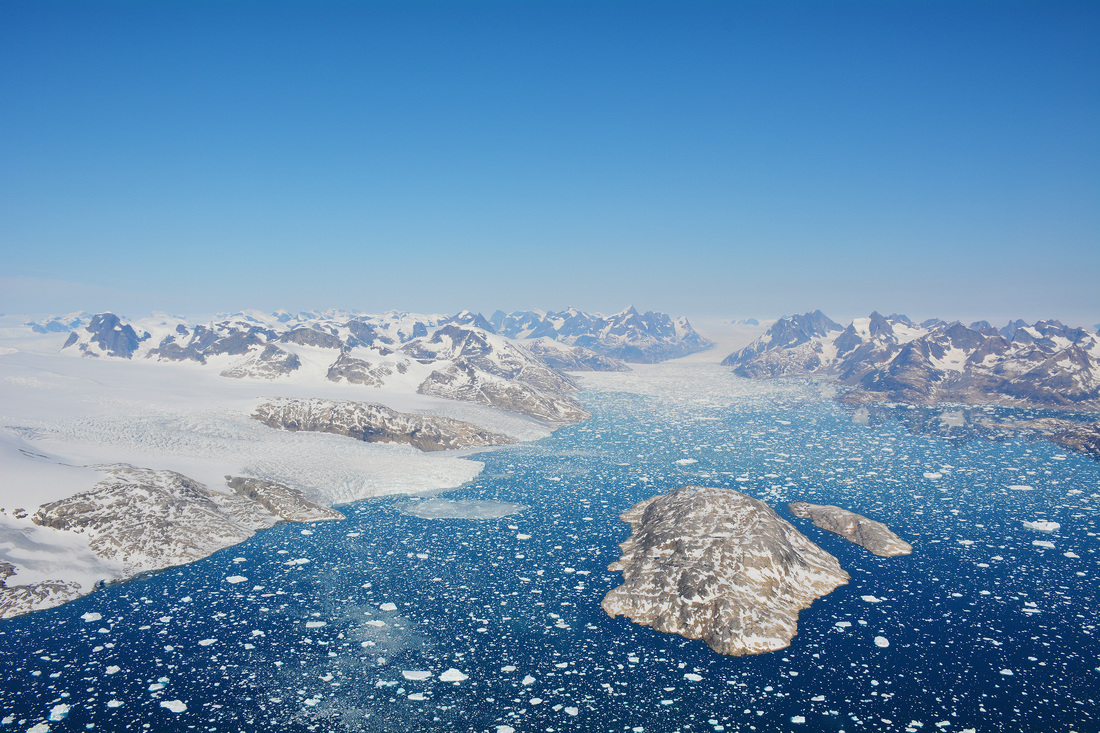
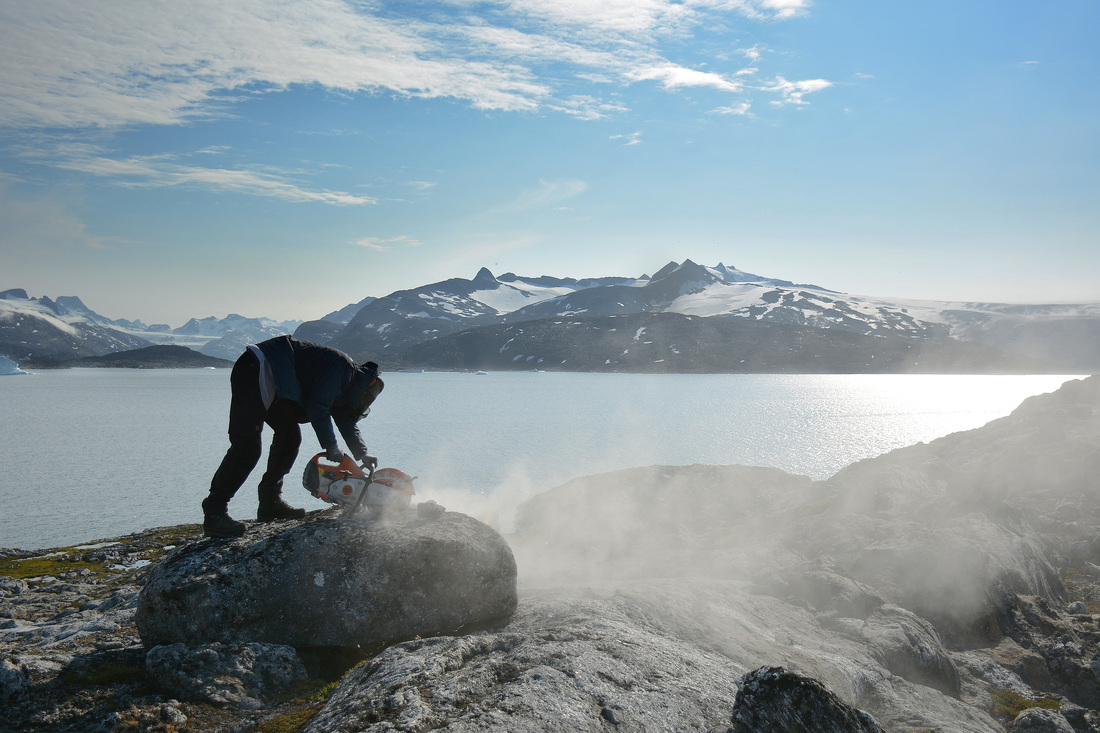
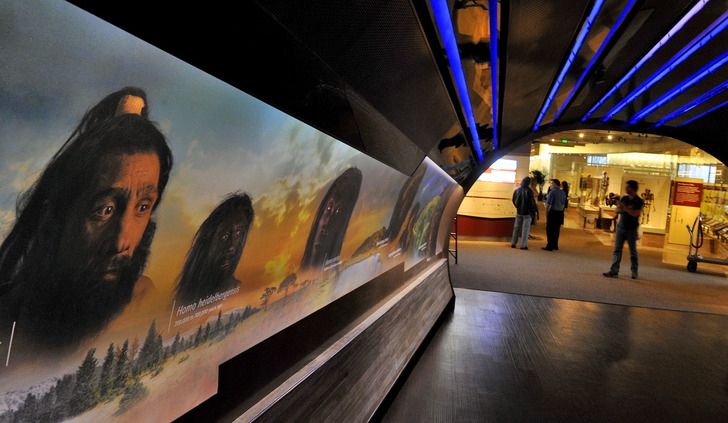
 RSS Feed
RSS Feed